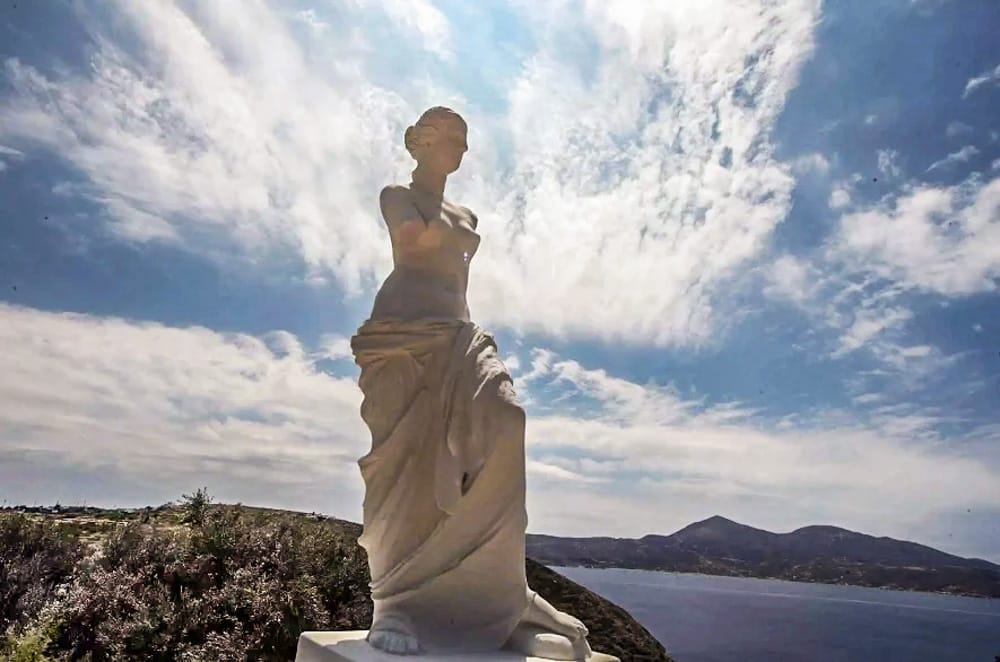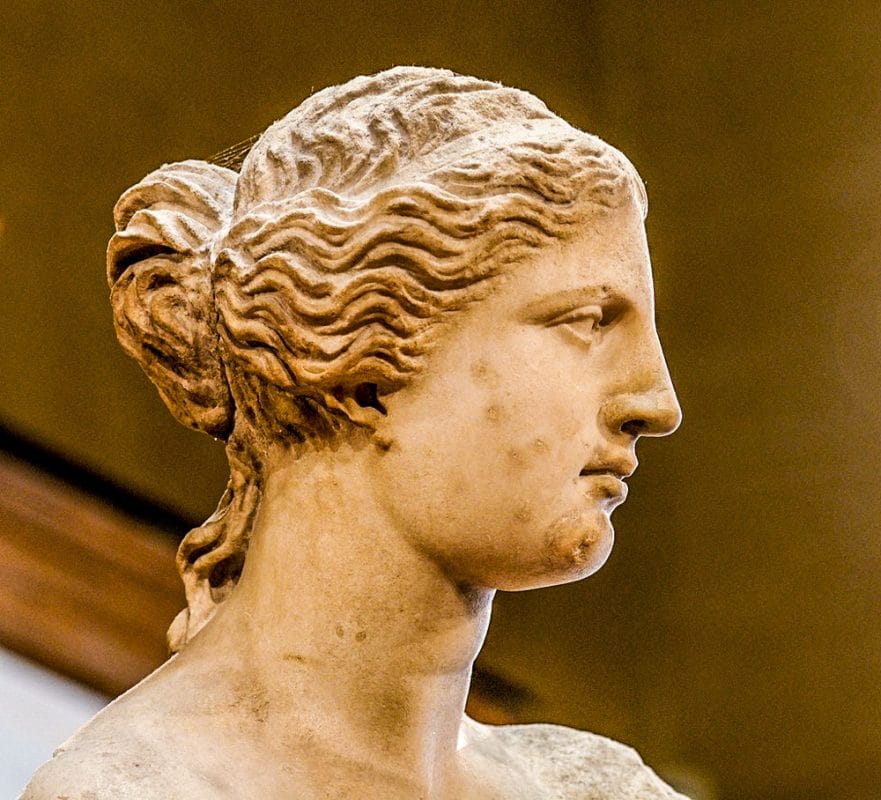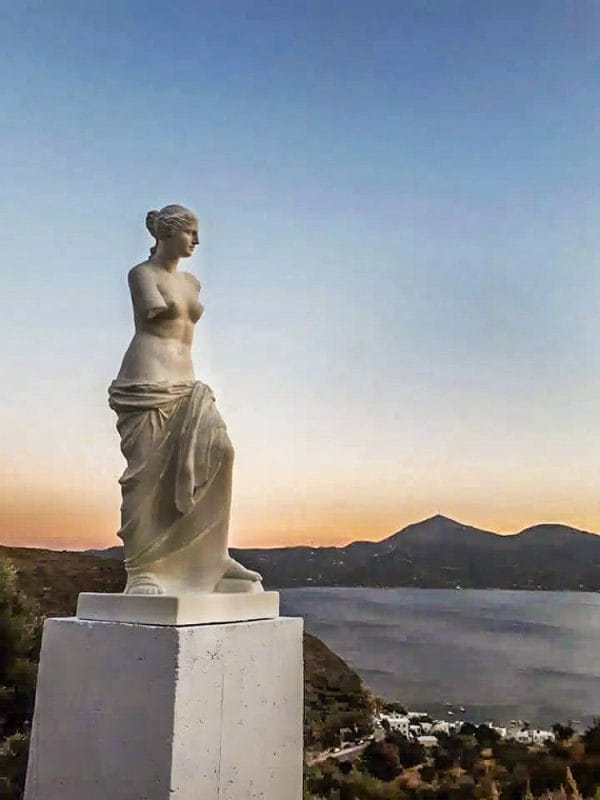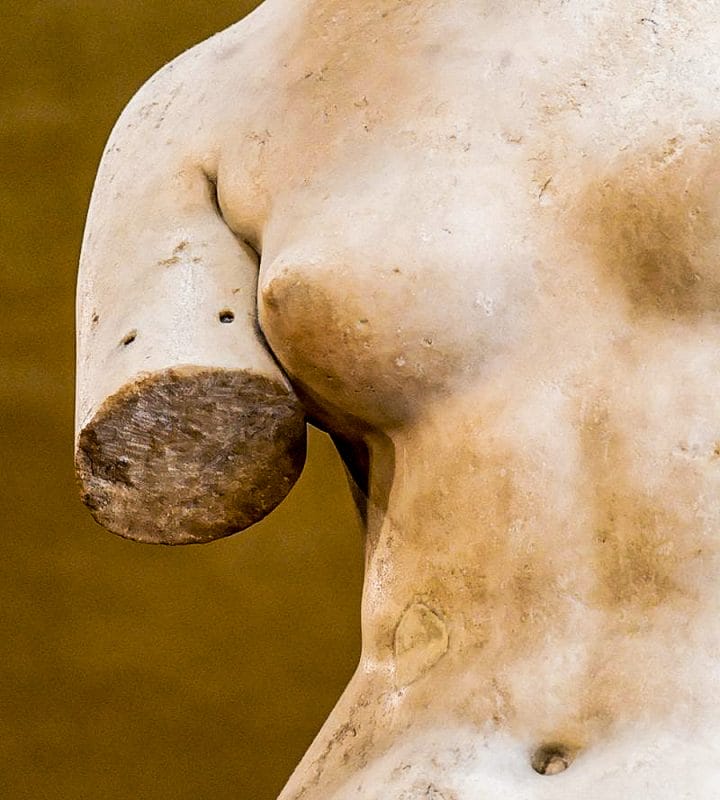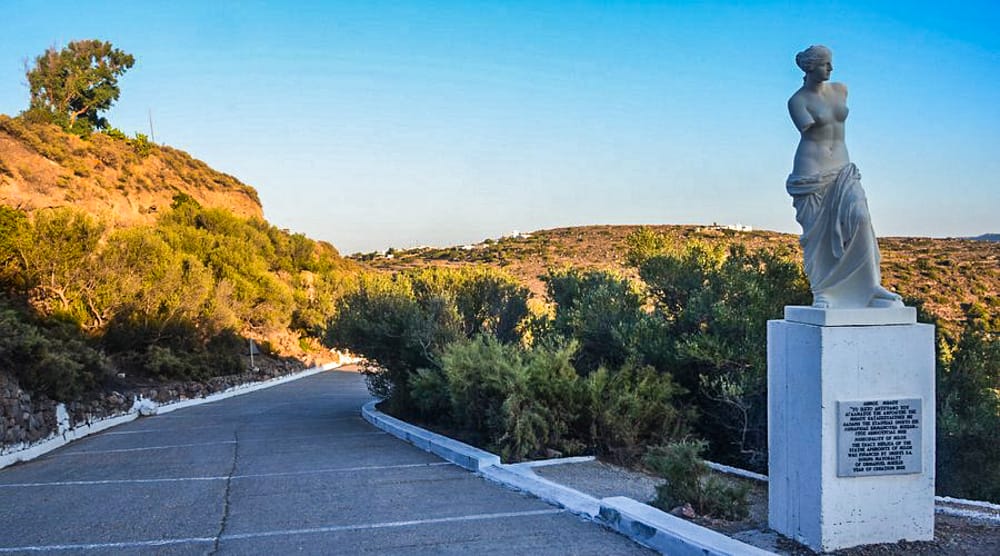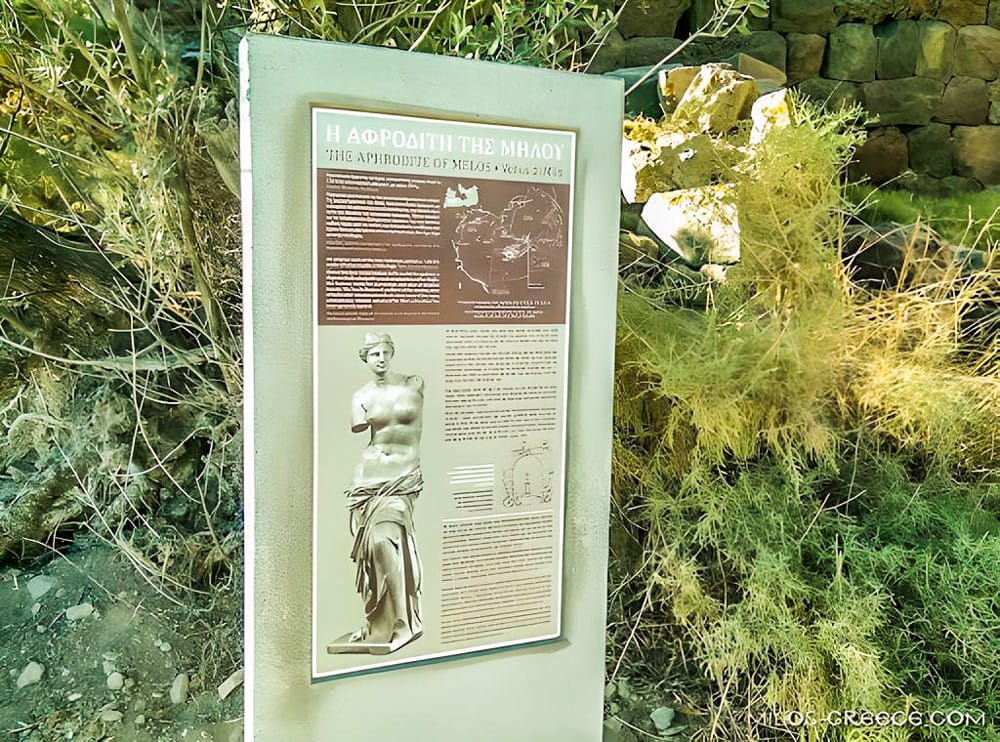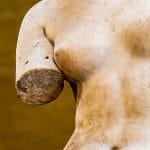Venus de Milo
The Venus de Milo or Aphrodite of Melos is an ancient Greek marble sculpture that was created during the Hellenistic period. Its exact dating is uncertain, but the modern consensus places it in the 2nd century BC, perhaps between 160 and 110 BC. It was discovered in 1820 on the island of Milos, Greece, and has been displayed at the Louvre Museum since 1821. Since the statue’s discovery, it has become one of the most famous works of ancient Greek sculpture in the world.
The Venus de Milo is believed to depict Aphrodite, the Greek goddess of love, whose Roman counterpart was Venus. Made of Parian marble, the statue is larger than life size, standing over 2 metres (6 ft 7 in) high. The statue is missing both arms. The original position of these missing arms is uncertain. The sculpture was originally identified as depicting Aphrodite holding the apple of discord as a marble hand holding an apple was found alongside it; recent scientific analysis supports the identification of this hand as part of the sculpture. On the basis of a now-lost inscription found near the sculpture, it has been attributed to Alexandros from Antioch on the Maeander, though the name on the inscription is uncertain and its connection to the Venus is disputed.
The Venus de Milo rapidly became a cornerstone of the Louvre’s antiquities collection in the aftermath of the Napoleonic Wars, and its fame spread through distribution in photographs and three-dimensional copies. The statue inspired over 70 poems, influenced 19th-century art and the Surrealist movement in the early 20th century, and has been featured in various modern artistic projects, including film and advertising. In contrast to the popular appreciation of the sculpture, scholars have been more critical. Though upon its discovery the Venus was considered a classical masterpiece, since it was re-dated to the Hellenistic period classicists have neglected the Venus in favour of studying sculptures mentioned in ancient written sources, even though they only survive as later copies which are technically inferior to the Venus.
Discovery
Site of the discovery of the Venus de Milo
Sketch of the Venus and two herms found with it by Olivier Voutier, made shortly after the discovery
The Venus de Milo was discovered on 8 April 1820 by a Greek farmer on the island of Milos, then still part of the Ottoman Empire. Olivier Voutier, a French sailor interested in archaeology, witnessed the discovery and encouraged the farmer to continue digging. Voutier and the farmer uncovered two large pieces of the sculpture and a third, smaller piece. A fragment of an arm, a hand holding an apple, and two herms were also found alongside the statue. Two inscriptions were also apparently found with the Venus. One, transcribed by Dumont D’Urville, a French naval officer who arrived on Milos shortly after the discovery, commemorates a dedication by one Bakchios son of Satios, the assistant gymnasiarch. The other, recorded on a drawing made by Auguste Debay, preserves part of a sculptor’s signature. Both inscriptions are now lost. Other sculptural fragments found around the same time include a third herm, two further arms, and a foot with sandal.
Dumont D’Urville wrote an account of the find. According to his testimony, the Venus statue was found in a quadrangular niche. If this findspot were the original context for the Venus, the niche and the gymnasiarch’s inscription suggests that the Venus de Milo was installed in the gymnasium of Melos. An alternative theory proposed by Salomon Reinach is that the findspot was instead the remains of a lime kiln, and that the other fragments had no connection to the Venus; this theory is dismissed by Christofilis Maggidis as having “no factual basis”.
After stopping in Melos, D’Urville’s ship sailed to Constantinople, where he reported the find to the Comte de Marcellus, assistant to Charles François de Riffardeau, marquis de Rivière, the French ambassador. Rivière agreed that Marcellus should go to Melos to buy the statue. By the time Marcellus arrived at Melos, the farmer who discovered the statue had already received another offer to buy it, and it had been loaded onto a ship; the French intervened and Marcellus was able to buy the Venus. It was brought to France, where Louis XVIII had it installed in the Louvre. Contrary to the usual practice at the time, on the recommendation of Quatremère de Quincy, the Venus was not significantly restored but was exhibited in the state in which she was discovered. Quatremère, who believed that the Venus was originally part of a group with a sculpture of Mars, argued that as the entire Mars was missing it was impossible to restore the sculpture.
You must be logged in to submit a review.
REVIEWS
From where the copy of the Venus (Aphrodite) of Milos is standing you can see the original place where she was discovered in 1820 by a farmer. It is just s few steps down the dirt road to the right where you see some impressive round ancient stone walls. There you will find a sign with all necessary information.
Review scoring: 3 as expected based on price, quality and reputation, ie as expected. 4 better than expected and 2 lower quality than expected. 5 absolutely outstanding in all respects against expectations; food quality and presentation, staff, decor and atmosphere.
Cool to see Venus di Milo is situ in Milos🤣. Close to Christian catacombs that date back to 100ad….. that’s pretty Cool also.

